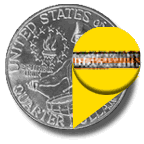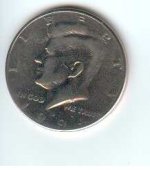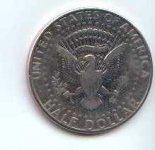bobinsd
Sr. Member
- Oct 20, 2005
- 491
- 250
- Detector(s) used
- Bounty Hunter
- Primary Interest:
- All Treasure Hunting
I have a 1974D Ike dollar in a pliofilm with a red sealed edge. How do I tell if it is "40% silver" or clad? There is apparently a significant difference in collectability.
Sorry, I'm new to this.
Thanks.
Sorry, I'm new to this.
Thanks.



 That would be cool if it was silver
That would be cool if it was silver 
 most scales are not accurate enough to tell the difference unless you have a triple beam balance or a good digi.
most scales are not accurate enough to tell the difference unless you have a triple beam balance or a good digi.






